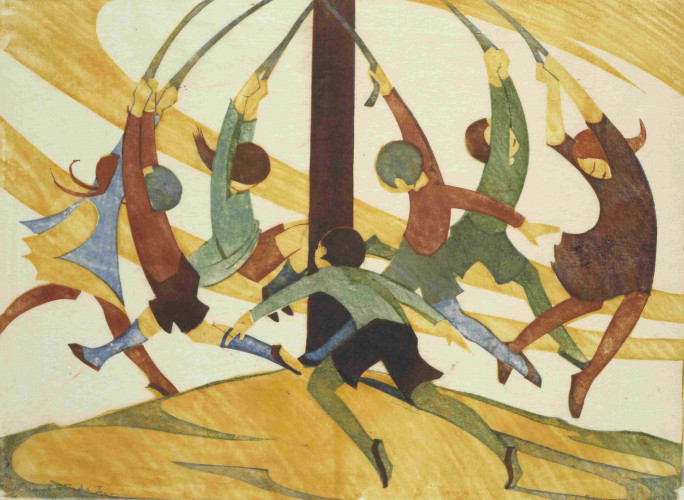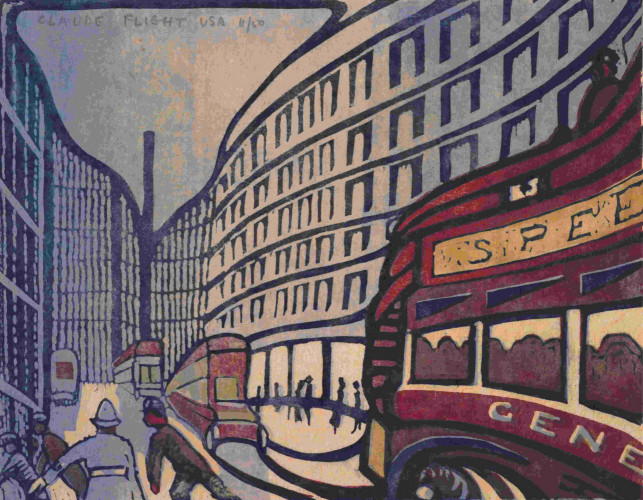Speed and Colour
British Lino cuts from the 1930s
1 February 2014 - 30 March 2014
The linocut prints showcased in this exhibition convey the optimistic verve of the roaring 1920s and 30s in Britain. Vehicles, machinery, sports, and daily life are all captured in vivid colour, with a striking sense of speed and movement.
Modern city life and its effect on people fascinated Claude Flight, a founder of London’s Grosvenor School of Modern Art, and the artists he mentored. The colour linocut, a 20th-century invention, was the medium of choice for this multinational group. They believed it expressed the spirit of the modern age: industrialism and utilitarianism.
Claude Flight saw the colour linocut as the democratic medium that would introduce modern art to the home of the ordinary person. He argued that these small and decorative prints should be affordable to the wage earner.
Artists used ordinary household linoleum for the blocks, cutting the design with gouges made from the ribs of old umbrellas. No press was needed, as the blocks were printed by hand. The artist placed a piece of paper on top of the inked block and rubbed over it with a home-made baren - a wooden disc wrapped in bamboo leaves. For areas of strong colour, the back of a dessert spoon or toothbrush could work even better.
One block was used for each colour, and the composition was built up by superimposing different colours and shapes. This method was ideal for simple, abstract designs.



